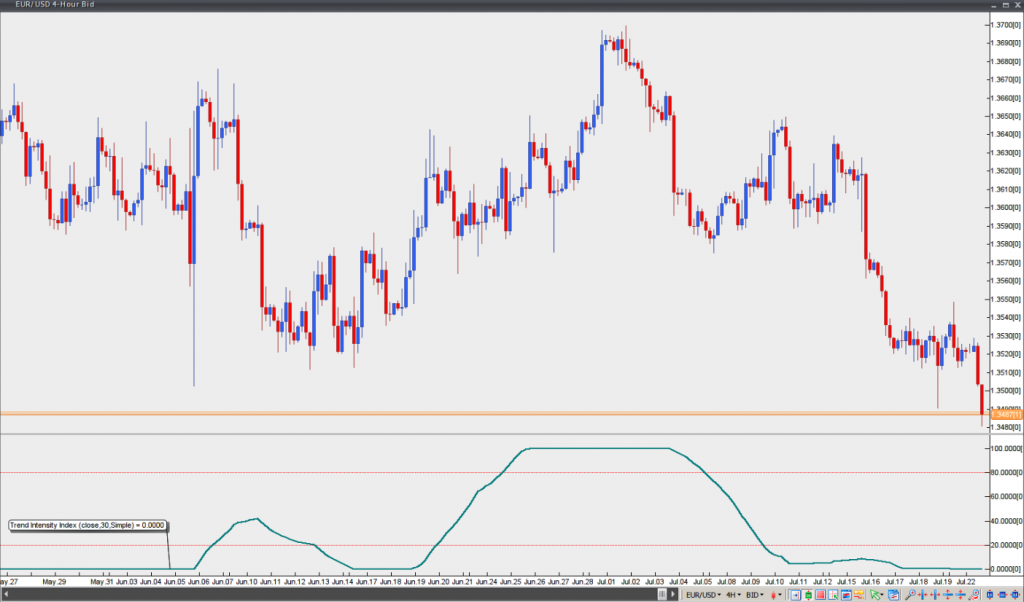Trend Intensity Index
This lesson will cover the following
- Explanation and calculation
- How to interpret this indicator
- Trading signals, generated by the indicator
Developed by M.H. Pee, the Trend Intensity Index helps to determine how strong the current trend is. The stronger the trend, the higher the chance the price may continue moving in the current direction. A trader will usually make his/her entry in the market during a strong trend and ride it, until the Trend Intensity Index (TII) provides an indication of a reversal.
A 30-period TII can be calculated as follows:
First, a 60-period Simple Moving Average needs to be calculated by adding the closing prices during the past 60 days and dividing the resulting value by 60;
Second, one needs to estimate the deviation of every of the last 30 closing prices from the 60-day SMA. The deviation is up, in case the closing price is above the SMA. The deviation is down, in case the closing price is below the SMA. Up deviations are estimated by subtracting the moving average from the closing price, while down deviations are estimated by subtracting the closing price from the moving average.
The 30-period Trend Intensity index is calculated as follows:
TII = (SD+) / ((SD+) + (SD-)) x 100, where
– SD+ equals the sum of up deviations of the recent 30 days
– SD- equals the sum of down deviations of the recent 30 days
The TII is bounded between 0 and 100. In case the TII shows a reading above 50, this indicates a bull trend. In case the TII shows a reading below 50, a bear trend is probably present. The more the TII distances from the 50 level, the greater the intensity of the current trend. The closer the TII is to 100, the stronger the bull trend. The closer the TII is to 0, the stronger the bear trend.
If a trader is to make a long entry tomorrow, during the trading session today the TII needs to be above the 80 level. If a trader is to make a short entry tomorrow, during the trading session today the TII needs to be below the 20 level. The trader should keep the position active, until the TII provides a signal for an entry in the opposite direction.
